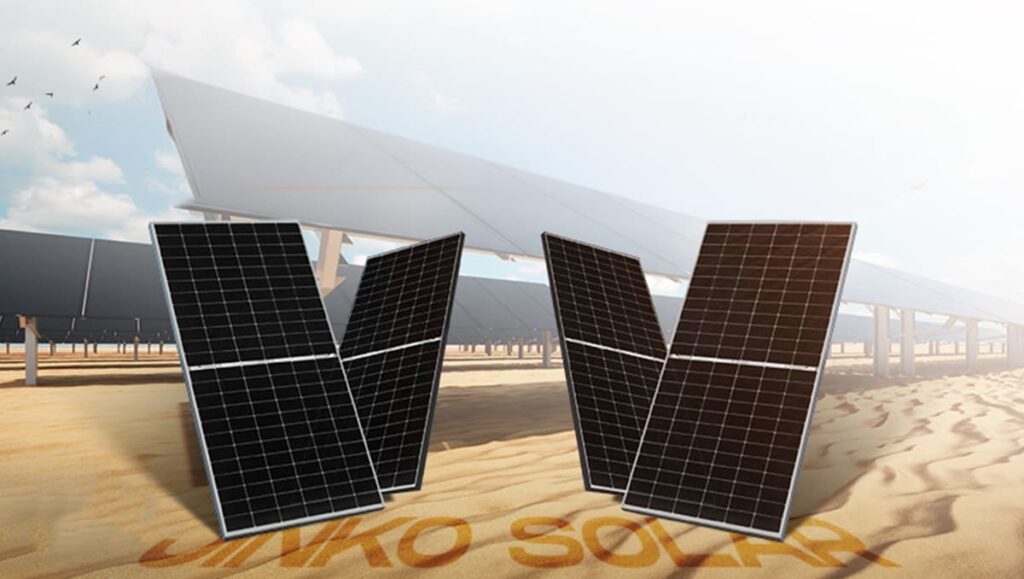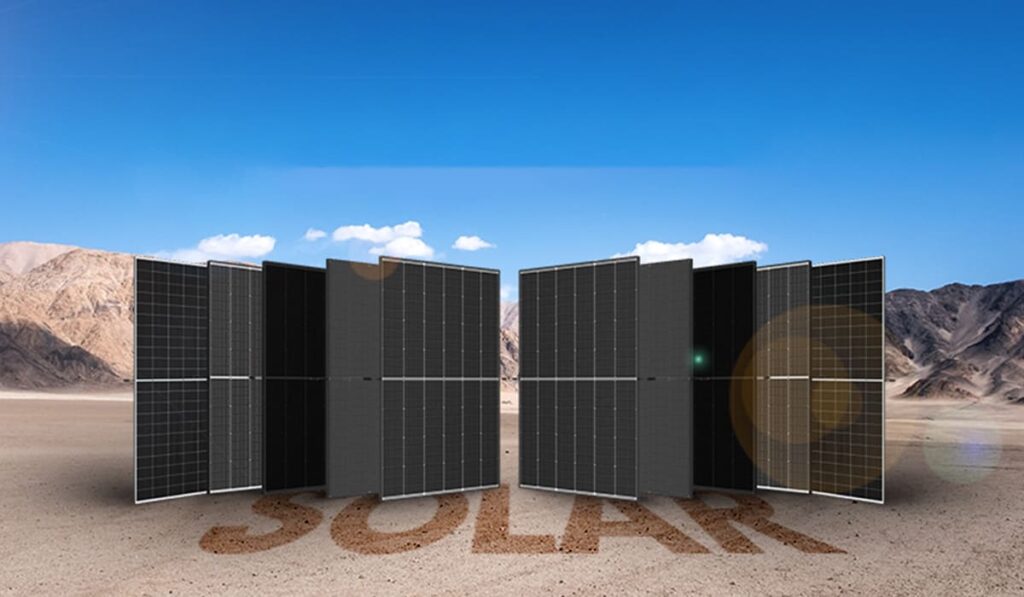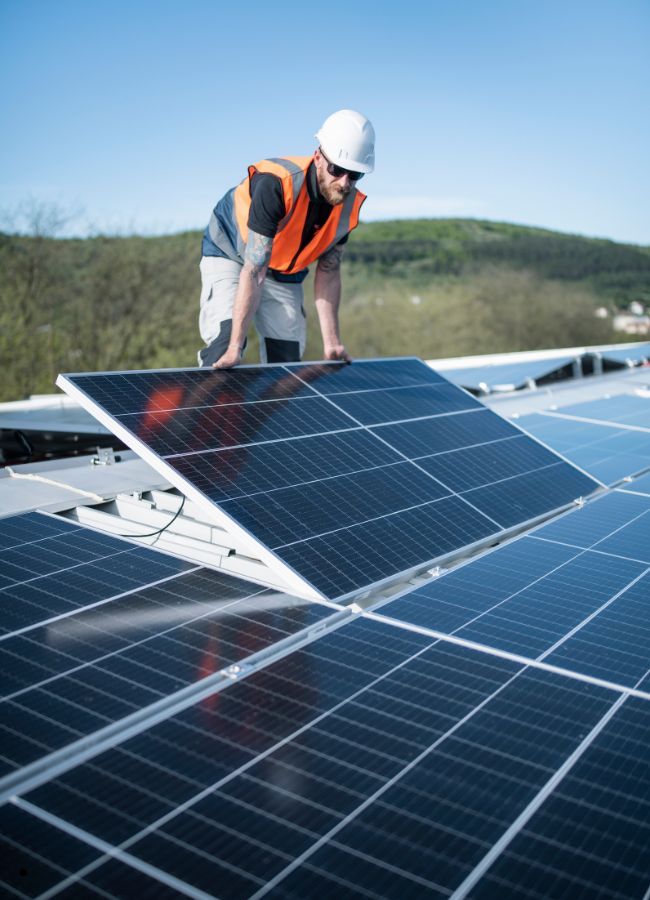Which type of Jinko Solar Panels should you choose for your projects?

Solar power has become the industry leader in sustainable electricity generation as the world embraces renewable energy options. People are realising the importance of renewable sources of energy and are soon switching for the same. Among the availability of so many solar panel manufacturers, Jinko solar panels have gained a place of their own. However, given the wide variety of goods they provide, selecting the best Jinko Solar panels for your projects might be challenging. Understanding the basics of Jinko Solar Panels Prior to getting too technical, it’s important to know the fundamentals of Jinko solar panels. The solar panel producer, Jinko Solar is well-known throughout the world for its dedication to performance, quality, and innovation. The company manufactures a wide variety of solar panels, each tailored to unique project requirements and energy requirements. Let us now explore what are the things to consider before you choose these panels for your residential or commercial purpose. Project Requirements Determining the needs of your project is the first step towards selecting the best Jinko solar panels. Take into account elements like the installation area’s size, the amount of sunshine that is accessible, and the required energy usage. You can choose the ideal panel for your project from a range of wattages and efficiency levels offered by Jinko Solar. Efficiency and Performance A key element that directly affects the quantity of energy produced is the efficiency of solar panels. High efficiency is a hallmark of Jinko solar panels, with some series surpassing 20%. Although more expensive, higher efficiency panels can be a smart investment in projects where space is at a premium or where maximising energy output is a top concern. Technology & Innovation To improve performance and longevity, Jinko Solar integrates modern technology into solar panels. Pay attention to features like half-cut cell design, multi-busbar technology, and PERC (Passivated Emitter Rear Cell) technology. These developments help to increase energy production and reliability—even under harsh environmental circumstances. Famous models of Jinko Solar Panels Now that we have a fair idea of the things to consider while choosing this panels, let us now explore some of the famous models of Jinko Solar Panels. Cheetah Series Jinko Solar’s Cheetah series is renowned for its remarkable power production and great efficiency. Cheetah panels use innovative techniques like half-cell design and tiling ribbon to produce exceptional results even in low light. For large-scale utility and commercial applications where optimising energy production is essential, these panels are perfect. Tiger Series Jinko Solar’s dedication to expanding the frontiers of solar technology is embodied in the Tiger series. Tiger panels provide exceptional performance over an extended period of time due to their lower degradation rate and improved module efficiency. Due to the improved power output provided by the 182mm wafer design, these panels can be used for both residential and commercial purposes. Swan Series The Swan series prioritizes beauty without sacrificing effectiveness. Swan panels are very efficient and have a sleek all-black look. They are intended for use in home and small commercial installations. These panels are a great option for projects like residential rooftops where aesthetics are important. N-Type Series Jinko Solar’s N-Type series is a viable option for anyone looking for exceptional performance and durability. N-type monocrystalline cells are used in these panels; these cells are more efficient and have superior temperature stability than conventional P-type cells. Both high-efficiency household and commercial applications are appropriate for the N-Type series. Final thoughts Selecting the best Jinko solar panels for your needs requires carefully weighing the advantages that various series offer against your unique needs. Depending on your preferences—efficiency, style, or innovative technology—Jinko Solar offers panel series that are customised to fit your requirements. Seek advice from solar specialists, evaluate your budget, and take into account the local climate and sunshine circumstances before making a choice. You can make sure that the performance and sustainability of your solar installation not only meets but beyond expectations by considering these variables.
Is Trina Solar Panels The Best Option?

Choosing solar panels for your house or place of business is an important decision in the modern age where sustainability and ecological issues are top priorities. Although trina solar panels have received a lot of attention in the renewable energy sector, are they the best choice for your particular requirements? Let us find out. An introduction to Trina Solar Founded in 1997, Trina Solar is one of the world’s top suppliers of smart power solutions and photovoltaic (PV) modules. As a result of its reputation for producing high-quality rooftop solar panels, the firm has grown to become one of the solar industry’s most well-known brands. Since Trina Solar’s goods are utilized all over the world, it is a desirable option for anyone wishing to harvest solar energy. Benefits of using Trina Solar panels Let us explore what kind of advantages you will experience by choosing these solar PV modules. High Efficiency: Trina solar panels have a stellar reputation for efficiency. Independent efficiency testing shows them to be among the best performers on a regular basis. Due to their high efficiency, you can produce more electricity with less panels, which makes them an excellent option for places where roof space is at a premium. Dependability: When making an investment in solar panels, reliability is crucial. Trina solar panels are known for their dependability and sturdiness. Your investment will last for many years as they have been constructed to endure severe conditions, such as high snowfall and extremely cold temperatures. High-Tech: Trina Solar is dedicated to ongoing innovation. To introduce the newest solar technology to the market, they make significant investments in research and development. Their panels have advanced characteristics that improve complete panel performance, including half-cut cell technology and PERC (Passivated Emitter Rear Contact) technology. Warranty and Customer Service: Trina Solar provides outstanding service to customers along with a strong warranty. Their panels generally have a 25-year performance warranty, which guarantees the long-term protection of your investment. Furthermore, their customer service is renowned for being friendly and quick to respond, handling any problems or complaints. Global Presence: Trina Solar’s global reach offers clients comfort from coast to coast. You can depend on their goods and assistance being available to you wherever you are thanks to their extensive network of dealers and service centers. What are the factors to consider? Trina solar panels have several benefits, but before choosing one, you should take your unique situation into account. Cost Up Front: They may be more expensive at first than certain other products available. However it’s important to keep in mind that solar panels are an investment that pays off over time due to their superior efficiency and longevity compared to other solar panel brands. Available Roof Area: Take into account the area that your property offers for a roof. Although the high-efficiency Trina Solar panels might take up less space, you still need to make sure you have enough space to install as many panels as necessary to satisfy your energy needs. Local Climate and Environmental Conditions: Although these panels are designed to survive extreme weather, it’s still crucial to consider the local climate and environment. The resilience of Trina Solar panels becomes even more important if you reside in a region that frequently experiences extreme weather. Financial Incentives: Look into any local government rebates and financial incentives that may be offered for solar installation. With the help of these incentives, you may lower the overall cost of your solar panel system and increase the affordability of premium solutions like these solar PV modules. To sum up Trina Solar is without a doubt a top option if you’re thinking about installing solar panels on your house or place of business. It stands out in the market for renewable energy thanks to its dedication to performance, robustness, and innovation. The choice ultimately comes down to your personal requirements, financial situation, and geographic area. It is best to speak with a reputable solar installation who can evaluate your needs and make specific recommendations. Selecting solar panels means making an investment in a future that is sustainable and energy-efficient. Trina solar panels have shown to be a dependable and effective option for a large number of clients across the globe. Remember that the solution that best suits your individual needs and objectives is the greatest choice as you set out on your path towards sustainable energy.
What is the Life Expectancy of a Solar Inverter?

As a new clean and sustainable energy source, solar energy is gaining popularity among both homeowners and businesses. The solar inverter, a crucial component that transforms the direct current (DC) energy produced by the solar cells into alternating current (AC) electricity used in our houses and the grid, is the heart of every solar power system. But how long can we anticipate the lifespan of a solar inverter? Let us check out! Understanding the role of a solar inverter It’s critical to comprehend a solar inverter’s function in a solar power system before discussing its lifespan. DC power is produced by solar panels using sunlight. The majority of our home appliances and the grid, however, run on AC electricity. The solar inverter is useful in this situation. In order to be compatible with the electrical systems we use every day, it converts DC current into AC electricity. It essentially fills the gap between the generation and use of energy from renewable sources. Factors influencing the lifespan of a solar inverter Let us explore the various factors that affect the lifespan of an inverter. Quality of components: A solar inverter’s lifespan is significantly influenced by the level of quality of its parts. Longer lifespans are often seen in inverters constructed with higher-quality components and craftsmanship. Preventing early replacements and maintenance issues can be accomplished by making an initial investment in an excellent inverter. Types of inverters: String inverters and microinverters are the two main categories of solar inverters. Microinverters, which are attached to each solar panel individually, have a somewhat longer lifespan than string inverters, which have connections to many solar panels. This is due to the increased voltage and temperature stress that string inverters are exposed to, which shortens their lifespan. Environmental factors: The solar inverter’s lifespan is significantly influenced by the setting in which it is situated. Exposure to direct sunshine, excessive moisture, and high temperatures all hasten wear and tear. These environmental variables can be lessened by installing and mounting the inverter properly, for example, in a shaded region. Care and keep up: A solar inverter’s lifespan can be increased by performing routine care and upkeep. The accumulation of dust and dirt might hinder cooling and the transfer of heat. Maintaining the inverter’s cleanliness and maintaining sufficient airflow can significantly alter performance. The warranty: Depending on the kind and craftsmanship of the inverter, solar inverters frequently come with supplier guarantees that can last anywhere from five to twenty-five years. An extended warranty usually reflects the maker’s faith in the robustness of the product. Fluctuations in the grid voltage: The efficiency and longevity of the inverter might be affected by spikes or changes in grid voltage. The inverter can be protected from such power surges by fitting surge-resistant devices. The load in the inverter: The inverter’s longevity is also influenced by the power load it is exposed to. Long-term operation of the inverter at near to its maximum rating can hasten its deterioration. The longevity of the inverter can be increased by oversizing it to bear the load more comfortably. Average lifespan of solar inverters The typical lifespan of a solar inverter might vary greatly depending on the numerous elements at play. But as a general principle: Normally, string inverters operate 10 to 15 years. Microinverters typically have an average lifespan of 15 to 25 years. It’s important to realize that these are only approximations, and actual performance may differ depending on the previously listed variables. How well the inverter is built and installed has a big impact on how long it will last in your solar power system. Final thoughts For people who have invested in solar power systems, the lifespan of an inverter is a significant consideration. Your solar installation can be made to last for a long time and be cost-effective by knowing what affects an inverter’s lifespan and taking proactive measures to increase it. Although inverters’ average lifespans might vary depending on their quality and kind, with the right maintenance and care, you can considerably extend their operating life and continue to enjoy the advantages of solar energy for many years to come.

